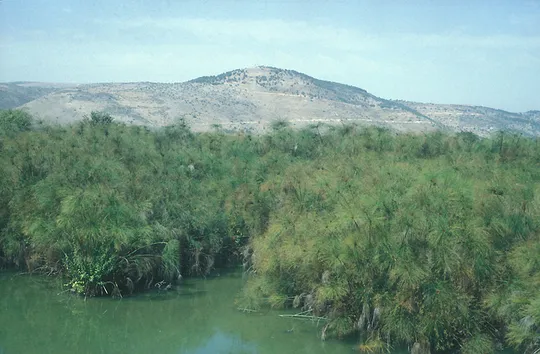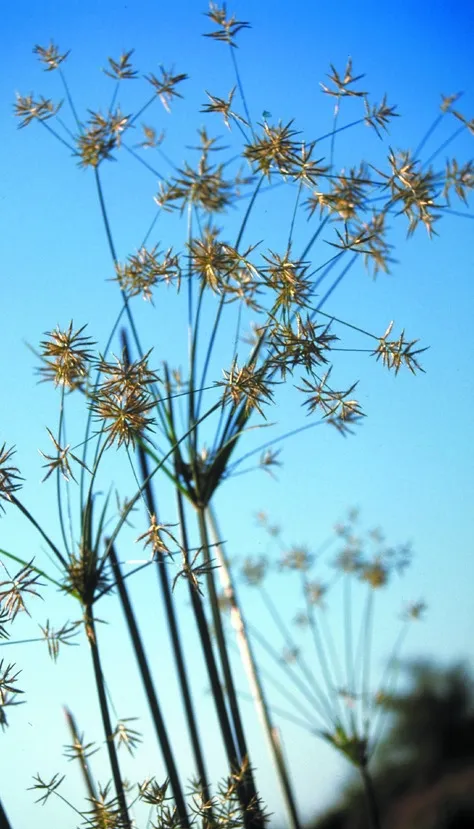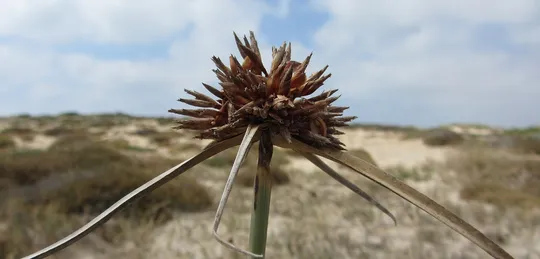Cyperus eleusinoides
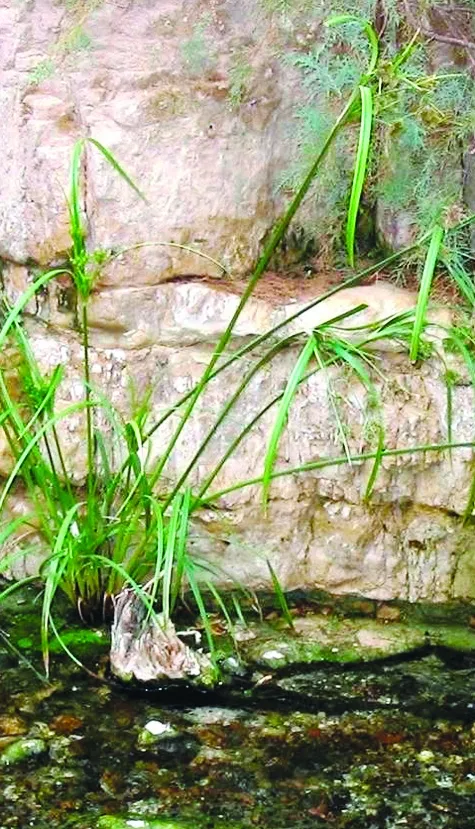
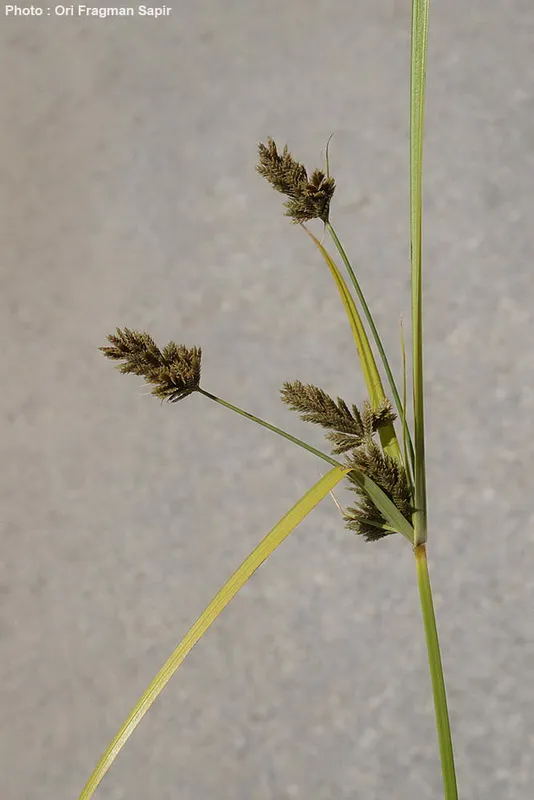
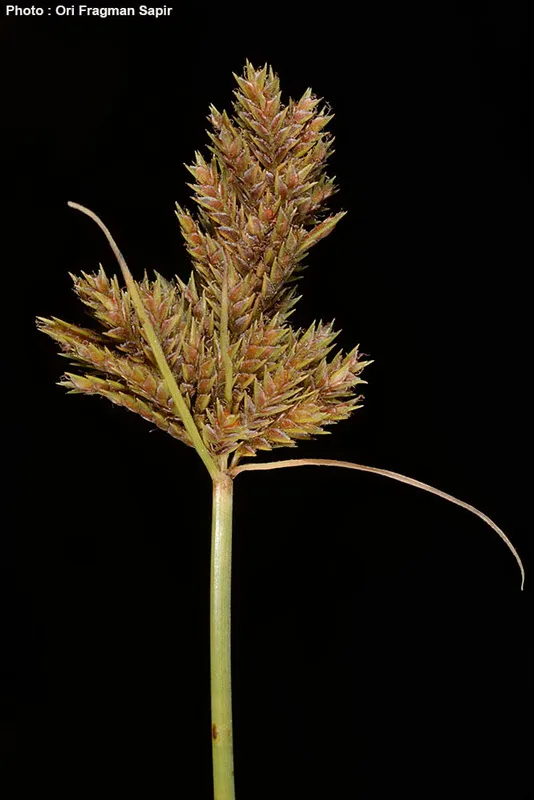
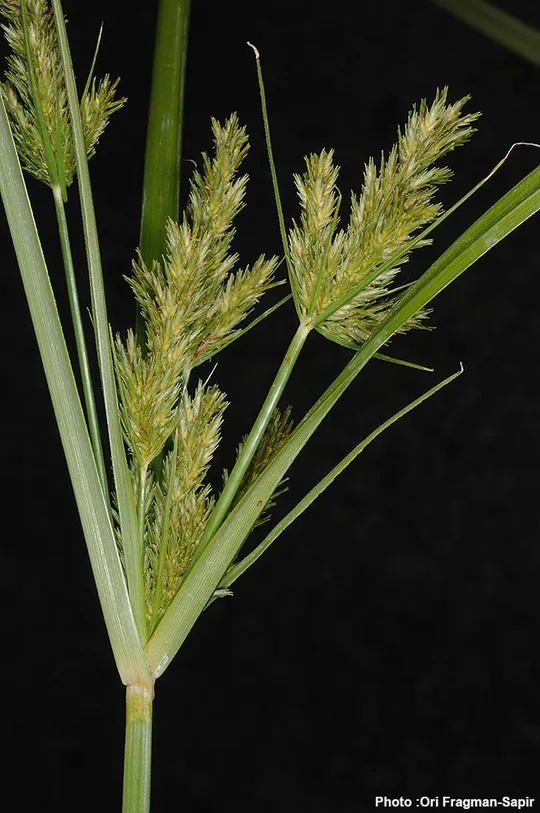
Cyperus eleusinoides was collected in 1931 at En Fu'ar in upper Wadi Qelt (= En Prat in Wadi Prat). Since then no botanist collected or observed it in Wadi Qelt. The species was known from three sites in the En Gedi Oasis, and it survived in only two of them: David Stream and Arugot Stream. In the En Gedi spring, the plant was collected in 1951 and in 1965 and then became extinct.
The edges of springs, wetlands and streams in desert oases. In En Gedi (Michael Blecher, 2005, unpublished data) Cyperus eleusinoides grew at the edge of the base flow of perennial streams, sometimes in rock crevices near water. A single individual was observed in the oasis in a moist depression in agricultural land.
For the genus, see Cyperus corymbosus.
(According to Blecher, 1999, 2001, 2004; Michael Blecher, 2005 unpublished data)
• Monitoring since 1993 shows fluctuations in the Cyperus eleusinoides population size in the David and Arugot streams. After many strong floods in 1994 dozens of plants were observed in both streams, but since then it is evident that there is a decreasing trend in the number of plants, to the level of only a few plants in each stream in 1997-2000. The species survived the great flood that struck the En Gedi Oasis in 2001, but since then germination was observed at only a few points and in 2004-2005 less than 10 individuals were counted in each of the streams.
• The sites in which C. eleusinoides grows in the country are included in a nature reserve, but its future in Israel is not certain. From the monitoring data the effect of floods in the David and Arugot streams' ecosystem, which borders on a catastrophe, is a major factor in the stream plant dynamics in general and in particular of Cyperus populations. The unpredictability of the intensity, frequency and irregularity of this factor can possibly lead to the extinction of the species. Another ecological factor limiting the distribution of species in the En Gedi Oasis is grazing by ibexes and hyraxes. In 2002-2005, not a single plant achieved flowering in certain sections because of the heavy grazing pressure.
The main recommendation is the restoration of a stable habitat in the flowing water on the En Gedi Spring slopes, unlike with the Arugot and David streams that are inclined to flooding. The attempts to restore the En Gedi Stream have already succeeded in establishing 5 Cyperus plants at the site during the first year (2005). Additional ways to encourage species dispersal and preservation are fencing sections of flowing channels to keep animals out and the use of Cyperus eleusinoides as a stream bank plant for ornamental pools and water reservoirs in the region.
Cyperus eleusinoides is a broadly distributed tropical and subtropical species: it grows throughout equatorial Africa, in India, in Malaysia and China. In the Flora Palaestina and in Israel plant keys C. eleusinoides is also noted from oases on the eastern side of the Dead Sea – Safi and Qalirohy, but has not been found there in recent years (1995-2004) and it may be extinct in Jordan as well (Ravak and Shmida, 2000). In the other Middle Eastern countries, the species is noted only from Yemen and Dhofar in the lower half of the Arabian Peninsula.
Cyperus eleusinoides is one of the rarest plants in Israel. It is a peripheral tropical species in the country, for which En Gedi is the northern distribution limit, as well the only site in the Levant. It symbolizes the importance of wetlands in the Dead Sea Valley for the population of tropical African elements along their migration corridor to the Middle East and northwards.
בלכר מ. 1999. שמורת עין גדי בשנת 1997 – בהשוואה לחמש השנים הקודמות. ידיעון הרשות לשמירת הטבע והגנים הלאומיים, 1 (נספח מקצועי): 12-20.
בלכר,מ. 2001 מדרון עין-גדי, רקע ראשוני לתוכנית הממשק ותמציתה. רשות הטבע והגנים, ירושלים, 51 עמ'.
בלכר מ. 2004. ממשק מעיין עין גדי וסביבותיו: תכנית רעיונית והנמקתה. רשות הטבע והגנים, ירושלים, 14 עמ'.
Current Occupancy Map
| 1000 squre meter pixel | 5000 squre meter pixel | 10000 squre meter pixel | |
|---|---|---|---|
| number of observations | 0 | 0 | 0 |
| in total pixels | 0 | 0 | 0 |
| Family | Cyperaceae |
| Classification | On the endangered species list |
| Ecosystem | Desert |
| Chorotype | Sudano- Tropical |
| Conservation Site | En Gedi Oasis |
| Rarity |
1
6
6
|
|---|---|
| Vulnerability |
0
2
4
|
| Attractiveness |
0
0
4
|
| Endemism |
0
0
4
|
| Red number |
1
4.7
10
|
| Peripherality | S |
| IUCN category | DD EW EX LC CR EN VU NT |
| Threat Definition according to the red book | Endangered |
 Based on:
Based on:
